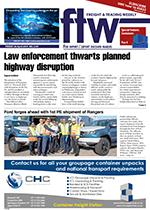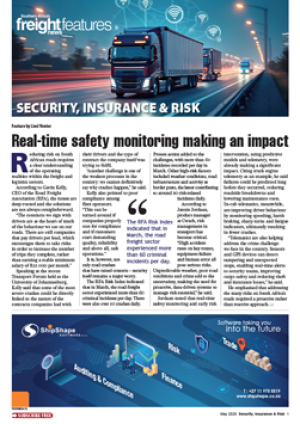Roughly 30% of shipping containers passing through the port of Cape Town port are empty, says Mike Walwyn, operations director at Nexlog. “South Africa is a net importer of 40-foot containers because it imports a lot of fast-moving consumer goods, while not enough of these containers leave the country,” he explains. While South Africa's trade balance can either be positive or negative on a monthly
basis, the long-term trend has been negative, which skews the import-export container balance and adds costs to the supply chain. Walwyn adds that the 20-foot import-export container ratio is only slightly more balanced, while the opposite is true in the case of 40-foot reefer containers, a situation created by the country’s fruit exports. However, while thousands of empty reefer containers are being brought into the country, they have comparatively limited usability. He says exporting a
40-foot container from South Africa to China is roughly 25% of the import price of the same container from China. Furthermore, South Africa imports significant volumes of textiles and clothing from China. “The local clothing industry used to be quite strong but has been decimated by its uncompetitive nature, despite the fact a 45% duty is imposed on those incoming goods. This tax goes some way to explain the government's lack of will to reduce clothing imports,” he laments. Walwyn believes that solving the container imbalance requires the development of more viable local manufacturing. “South Africa does not have a viable container manufacturing industry and even if it did, the last thing it needs is more 40-foot
containers,” he continues. “Trencor, which used to own Henred Fruehauf, had a container manufacturing plant in iSithebe in KwaZulu Natal, but the Chinese spotted a gap in the global container market and today, just about all containers are made in China.” According to the driver, thieving was rife as drivers were sitting targets, especially at night. “They are also stealing the goods from the trucks and we don’t have security,” he said. “The officials also say we must park our trucks and leave them. This is not good.” Another driver, who has been waiting at the Nakonde/ Tanduma border post, said there it was mostly fuel tankers. Asked where the drivers were getting food, he said most were cooking on fires next to the trucks at the side of the road.
South Africa does not have a viable container manufacturing industry and even if it did, the last thing it needs is more 40-foot containers. – Mike Walwyn
South African ports battling container imbalances
26 Apr 2019 - by Tristan Wiggill
0 Comments
FTW 26 April 2019

26 Apr 2019
26 Apr 2019
26 Apr 2019
26 Apr 2019
26 Apr 2019
26 Apr 2019
26 Apr 2019
Border Beat
Featured Jobs
New
New
New
